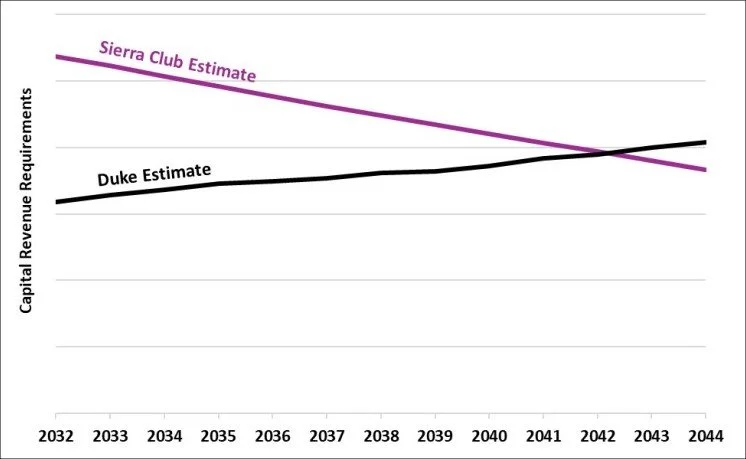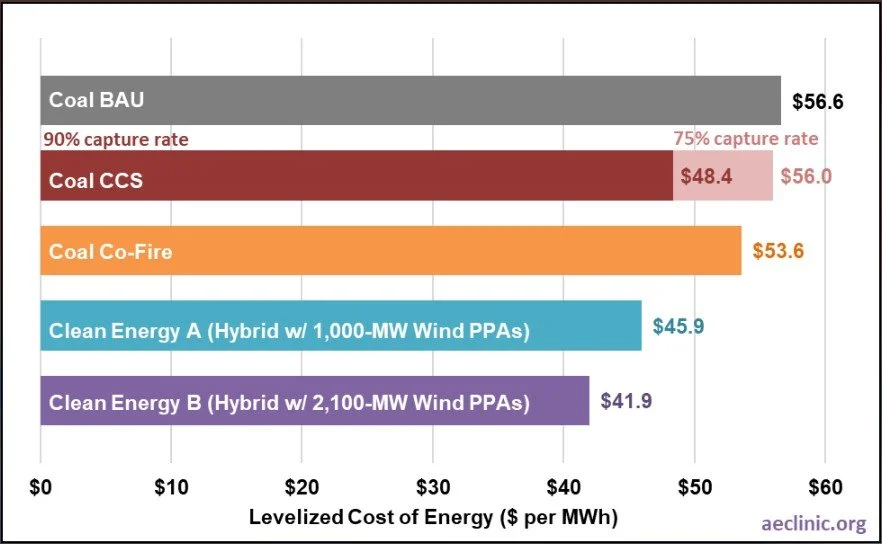Client: Southern Environmental Law Center (SELC)
Author: Chirag T. Lala, Joshua R. Castigliego, Tyler Comings, Elisabeth Seliga
March 2024
On behalf of the Southern Environmental Law Center, Researchers Chirag T. Lala and Joshua R. Castigliego, Senior Economist Tyler Comings, and Assistant Researcher Elisabeth Seliga prepared a report that models the costs to consumers of alternatives for the soon-to-be retired Kingston Fossil Plant—a coal-fired power plant in Harriman, Tennessee that is owned and operated by the Tennessee Valley Authority (TVA). TVA’s Alternative A plan replaces Kingston with a gas-heavy portfolio that constructs gas combined cycle (CC) and combustion turbine (CT) plants, while Alternative B focuses on replacing Kingston with a clean energy portfolio that relies on solar and battery storage resources.
Among its four modeled alternatives, AEC finds the net present value costs of Alternative B—renewable and storage replacements that are self-built or procured through power purchase agreements—to be the lower cost option. This contradicts TVA’s claim that Alternative A is the lower cost option. In addition, it is not clear why TVA selected the amounts of solar and storage capacity in Alternative B. The storage capacity is exorbitant compared to the size of the Kingston plant and the solar capacity is made additional to a large amount of capacity TVA is already scheduled to build.
These irregularities are partly attributable to TVA’s failure to synchronize site specific resources assessments with an integrated planning process that provides a full range of plausible alternatives. AEC provides the following recommendations for TVA’s 2024 IRP:
Conduct an all-resource RFP that assesses the range of resources that could reasonably be constructed.
Consider the full set of resources that could facilitate decarbonization of TVA’s grid, including transmission and distribution, distributed energy resources, energy efficiency, demand response, and others.
Conduct optimization modelling on all potential resources instead of on pre-selected portfolios.
Ensure site-specific planning does not contradict TVA’s most recent IRP.
Ensure the IRP provides plausible schedules for the installation and decommissioning of capacity.
Use transparent assumptions and modeling inputs
Link to Report
Return to our Work




